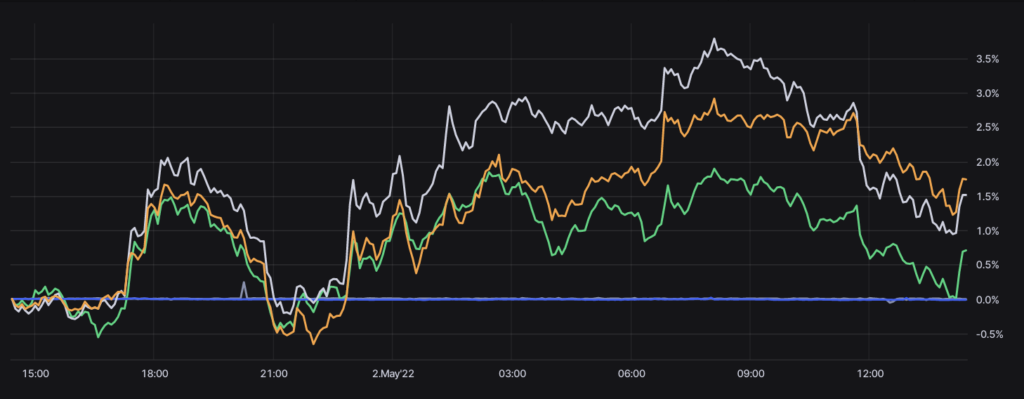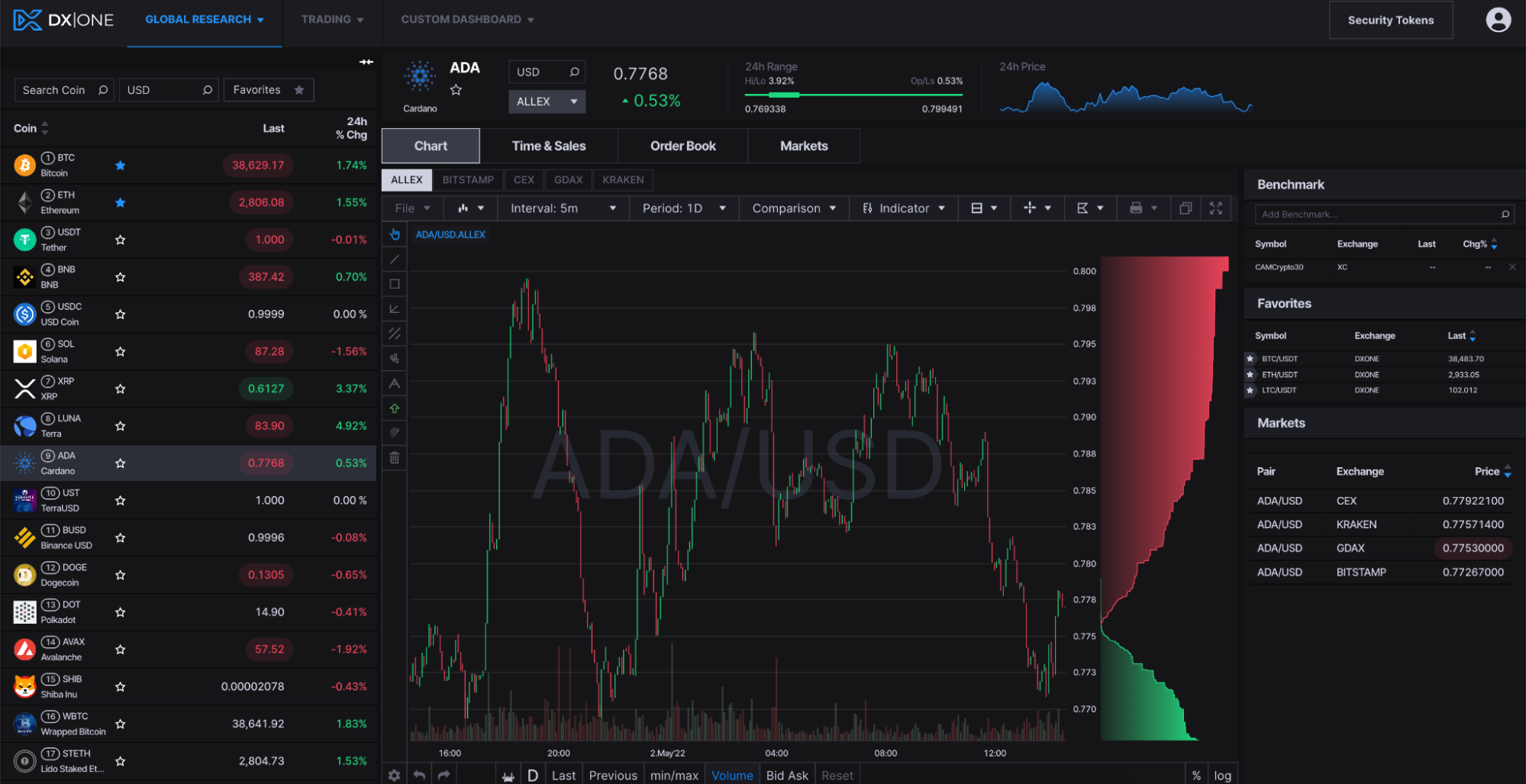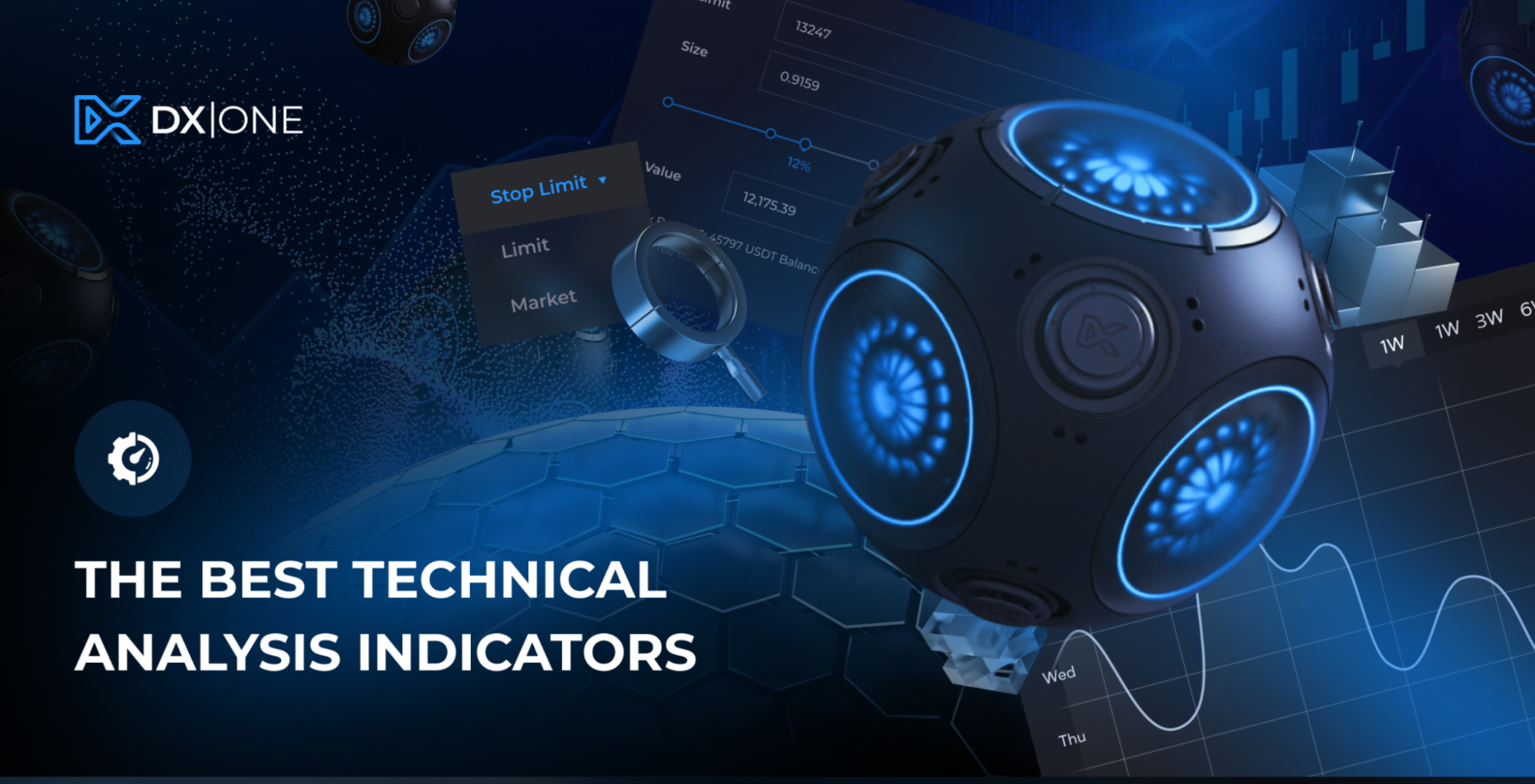If you are a cryptocurrency investor or trader, the chances are high that at some point in time, you will run into a bottleneck or a wall where you may feel as if your knowledge is blocking you from making well-informed decisions regarding trading.
To be more efficient at the decision-making process, you will need to learn as much as possible about some of the best indicators.
As such, the team at DXONE, a research-based crypto trading platform, will go over the top 10 technical analysis indicators that you need to be aware of when it comes to cryptocurrency trading.
Top 10 TA Indicators for Crypto Trading
Here are the Top 10 technical indicators for cryptocurrency trading that every investor should know as a means of getting the best possible outcome throughout their investment endeavors. Keep in mind that all of these should be available at the cryptocurrency exchange you are using, such as DXONE Exchange, for example.
Each of these indicators has its own pros, and mixing, matching, and combining some of them could give you access to additional data, so let’s dive in.
Trendlines
Trendlines are the easy-to-spot lines that traders draw on in charts as a means of connecting a series of prices together or simply showcasing a data’s best fit. The resulting line is then used as a means of giving the trader an idea of the direction in which an investment’s value might move towards.

Source: DXONE cryptocurrency exchange.
RSI
Next, we have the RSI, or the Relative Strength Index, which is a momentum oscillator. What this means is that it essentially measures the speed, as well as the change of the price movements. This typically oscillates between zero and 100.
Moving Average
The moving average or MA is an indicator that is used throughout the technical analysis as a means of helping to smooth out the price data, over a specified period of time, through the process of creating a constantly updated average price.
Bollinger Bands
Bollinger Bands are a trading tool that is used as a means of determining entry and exit points for any given trade.
Traders will typically use these bands as a means of determining any overbought or oversold conditions. This is typically considered to be a risky strategy due to the fact that the indicator puts its emphasis on price and volatility whilst ignoring other information that might be relevant.
Falling / Rising Wedges
Wedges are essentially a type of continuation, as well as a reversal of chart patterns. A rising wedge gets formed when two converging trend lines in the stock’s price have been rising for a specified time frame, while a falling wedge gets formed when two converging trend lines in the stock prices have been falling for a pre-defined period of time. The price target is then equal to the height of the back of the wedge.
Head and Shoulder
The Head and Shoulder pattern is chart information that ends up appearing as a baseline with three peaks, where the outside two are close in height, while the middle one is at its highest.
When it comes to conducting a technical analysis, a head and shoulders pattern describes chart information, which predicts a bullish-to-bearish trend reversal.

Source: DXONE
W / M
The W / M technical analysis gauge displays the real-time technical overview for a pre-selected time frame from the trader. A double-top has an M shape to it and is an indication of a bearish reversal in trend, while a double bottom has a W shape and is a signal for a bullish movement in the price.
Triangles
Within technical analysis, a triangle is a continuation pattern on a chart that is formed in a similar way as a triangle would be. As the market continues to trade in a sideways pattern, the range of trading narrows and the point of the triangle gets formed.
Bull Market Support Band
The Bull Market Support Band is based on volatility and can aid in determining the trend direction whilst also providing trade signals.
Fear & Greed Index
The Fear & Greed Index is a compilation of seven different indicators which are used to measure some aspects of stock market behavior. These include the stock price momentum, the strength, breadth, put and call options, junk bond demand, market volatility, and safe-haven demand.
How Do I Start Learning Technical Analysis?
The best way through which a beginner that’s just starting out in the sphere of cryptocurrency trading can begin learning about technical analysis is to start learning and start getting a solid understanding of the core principles, after which they can apply that knowledge through backtesting or paper trading.
In other words, beginners need to first understand why technical analysis works as a window into market psychology as a means of identifying the opportunities through which they can profit.
Which Technical Indicator Is the Most Accurate?
Technical traders will typically find a wide variety of indicators, patterns, and oscillators in exchanges such as the DXONE exchange as a means of generating signals.
Each indicator will serve a different role, and as such, the most accurate indicator is dependent on what the trader needs accuracy on. They are used as forecast signals as a means of predicting the price movements of a cryptocurrency, and while they are an important component for traders, each of them plays its own role.
Which Technical Indicators Work Best Together?
Each of the aforementioned technical indicators can be combined as a means of getting better data for your specific requirements, depending on what cryptocurrency you are analyzing and how in-depth you want to go.
There is no definitive combination that can provide you with 100% accuracy, as each of these tools and indicators is used to aid you in predicting the market.
Which Is the Best Indicator for Day Trading?
Some of the best technical analysis indicators when it comes to day trading include trendlines, RSI, moving average, Bollinger bands, falling and rising wedges, head and shoulder, W/M, triangles, bull market support band, and the fear and greed index.
Trade with DXONE: A trusted, innovative research-based cryptocurrency exchange.
Find us at www.dxone.com Email: [email protected]
Trade crypto from your iPhone. Download the iOS app.
Become a partner: Join us here.
Trading in the crypto market carries risk. Please see our risk warning.

